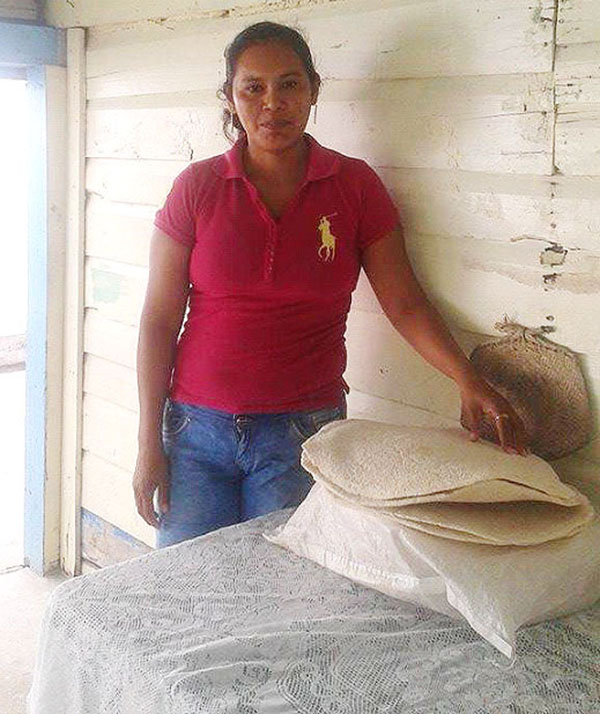A staple in indigenous communities in Guyana, the versatile cassava is a sturdy, starchy root vegetable, similar in appearance to that of a yam, that grows well in tropical climates with well-drained soils. Cassava has poisonous properties, yet people the world over have managed to domesticate it, developing techniques that serve to make it palatable.
Known scientifically as Manihot esculenta, Cassava is believed to have originated in the Neotropics, a biogeographic division which encompasses all areas from Mexico of Central America, the Caribbean and southern South America. Based on archeological evidence, a wild version of the plant was domesticated around 8,000 – 10,000 years ago in the Amazon Basin and then spread to surrounding tropical lowlands such as Guyana’s deep South Rupununi region.
Cassava is cultivated in all ten administrative regions across Guyana. However, commercial harvesting is mostly done in regions One, Four, Eight and Nine. The plant takes approximately nine months to fully mature. Indigenous farmers place the cassava plant in two categories: bitter or kîse and sweet or kana
Although both variants are grown, forest farmlands and subsistence gardens are usually dominated by the bitter cassava, which is a hardier plant. Amerindians were able to successfully construct and sustain various strategies and technologies to ensure that the crop was edible. Regrettably, in the case of bitter cassava, knowledge was largely gained through trial and error.
The process of preparing sweet cassava includes simply washing the outer skin, peeling it and then cooking it. However, bitter cassava preparation requires a more laborious approach. To ensure that all poisonous content is extracted from the bitter cassava, it is grated after the outer skin has been removed, and then the juice is thoroughly squeezed out. To do this, a cylindrical shaped basket is used. There are several names for this tool, the most common of which is Matapee, as it is known by the Lokono (Arawak). Following extraction, the juice is placed in a container and left to settle for at least a day.
The juiceless cassava is then used to make cassava bread, doubtlessly the most produced byproduct of the root. The bread looks like a large, flat creamish-white cracker and is somewhat grainy. Traditionally, Amerindian serve it alongside Tuma, a stew made from various meats and basic ingredients such as fresh peppers and vegetable seasonings cooked in a sauce which also is derived from the cassava.
The cassava juice extracted during the preparation of cassava bread is used to make beverages such as Paiwari and Casseri. In practice, these drinks are reserved for special occasions and for welcoming guests and visitors. Cassareep is another popular and widely consumed cassava product. It is a thick, dark-brown liquid obtained from the bitter cassava root that is a vital element in the production of Pepperpot. Snacks such as cassava chips and cassava balls are also made and mostly sold as street foods by small-scale vendors and in school canteens.
Cassava is also extensively used in animal feed, sweeteners, and biodegradable products, paper manufacturing, as a lubricant in oil wells, and in the textile industry. Additionally, cassava is primarily used as a source of energy due to its high caloric value. The roots are high in vitamin C, thiamine, riboflavin, niacin, fibre and mineral contents. The leaves, which can be consumed if cooked or dried in the sun, can contain up to 25% protein. It should be noted, however, that boiling reduces the vitamin C content by 50 to 70% and much of the other nutritional content like fibre.
That being said, anyone can prepare and eat cassava. It is a versatile plant that is delicious and unique in its own right. Yet, one must be wary of potential hazards when it comes to preparing the bitter cassava. Remember to wash and remove the skin, squeeze thoroughly, and boil well.








